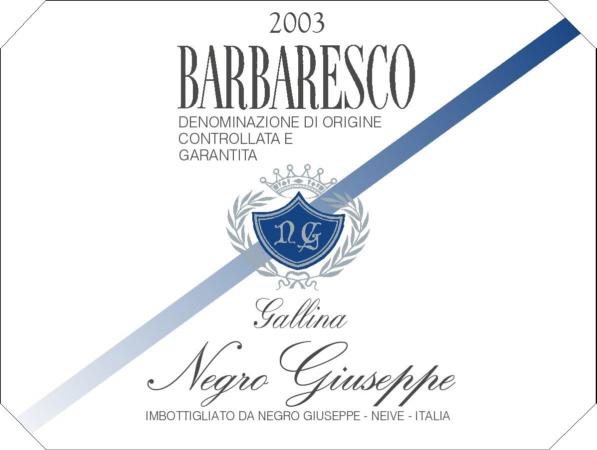2003 Barbaresco Nebbiolo
Negro Giuseppe Gallina's 2003 Nebbiolo from the renowned Barbaresco region presents an enchanting example of this noble grape. With its vibrant ruby hue, the wine immediately captures attention. On the palate, it is beautifully structured, showcasing a medium body that elegantly balances richness and finesse. The acidity is bright and lively, lending freshness to the experience, while the fruit intensity is prominent, revealing alluring notes of ripe cherry and dark plum, complemented by hints of rose petal and earthy undertones. Tannins in this wine are firm yet refined, providing a graceful backbone that promises aging potential. Overall, this expression from Barbaresco is undoubtedly a delightful treat for anyone seeking a classic Nebbiolo experience, and it's perfectly dry, making it a fantastic food-friendly choice for pairing with rich dishes.
Negro Giuseppe Gallina's 2003 Nebbiolo from the renowned Barbaresco region presents an enchanting example of this noble grape. With its vibrant ruby hue, the wine immediately captures attention. On the palate, it is beautifully structured, showcasing a medium body that elegantly balances richness and finesse. The acidity is bright and lively, lending freshness to the experience, while the fruit intensity is prominent, revealing alluring notes of ripe cherry and dark plum, complemented by hints of rose petal and earthy undertones. Tannins in this wine are firm yet refined, providing a graceful backbone that promises aging potential. Overall, this expression from Barbaresco is undoubtedly a delightful treat for anyone seeking a classic Nebbiolo experience, and it's perfectly dry, making it a fantastic food-friendly choice for pairing with rich dishes.




